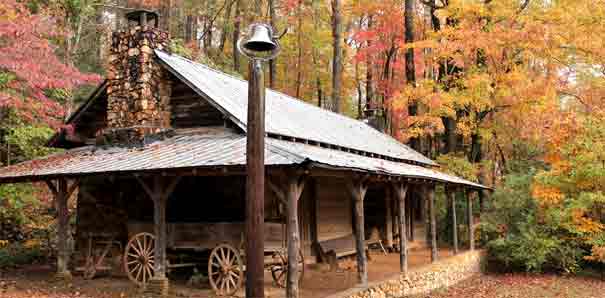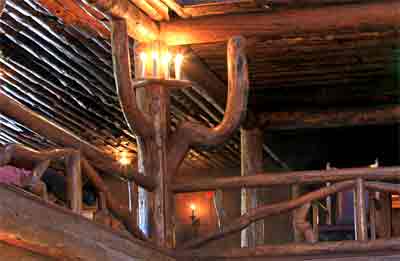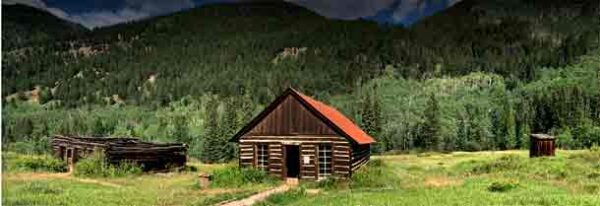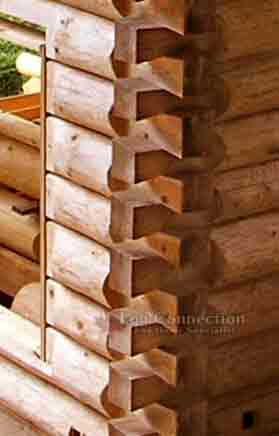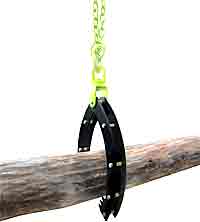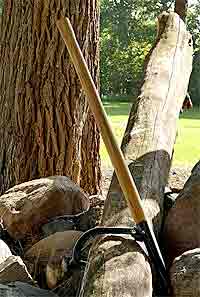Log Cabins as Tiny Homes
Back in the settler days, log cabins were the home of choice where straight pine trees were readily available. There were no laws or restrictions on claiming land or cutting trees like there are today. Buying logs could be expensive. Today there are log cabin kits available on eBay that make the wood price a little cheaper. See the log cabin kit shown at the bottom of the page.
Back then, building a simple log cabin would take two men and a horse about a month to complete. They built huge fireplaces from the rocks and mud in the area. There was always a large covered porch.
Foundations were as simple as large flat stones under the corners. Today you’ll need to build a much better foundation than that.
Yellowstone National Park Old Faithful Inn
The Old Faithful Inn at Yellowstone Park is a stunning example of log cabin construction and architecture. The Old Faithful Inn is just steps away from the Old Faithful geyser. The Inn is one of the largest log style structures in the world and is considered a masterpiece of “Parkitecture.” It’s actually worth the trip to Wyoming just to see it. Yellowstone National Park is nice too. Rooms need to be book a year in advance. Read more about this remarkable log structure here.
FoxFire Heritage Museum
See the cabin above and many more at the FoxFire Heritage Museum. More on this page: Homesteading: Wishful Thinking or Possibility?
Log cabins played a pivotal role in settling the United States
In the 70’s I helped Stuart Mace and a rag-tag team of volunteers restore this log cabin in the Ashcroft Ghost Town near Aspen Colorado. We also built a wooden walkway and excavated a century old outhouse, discovering many artifacts.
From the website: “In the spring of 1880, prospectors Charles B. Culver and W. F. Coxhead left the boomtown of Leadville to search for silver deposits in the Castle Creek Valley. After vigorously promoting their findings back in Leadville, Coxhead returned to find 23 more prospectors had joined “Crazy Culver” in the camp they named Castle Forks City. They formed a Miner’s Protective Association, built a court house, and laid out the streets in only two weeks. Each of the Association’s 97 members paid $5—or one day’s work and $1—to draw for building lots. By 1883, the camp, now called Ashcroft, was a town with a population of perhaps 2,000 with two newspapers, a school, sawmills, a small smelter, and 20 saloons—bigger than Aspen and closer to the railroad in Crested Butte.”
The town is open to visitors everyday. It’s a stunning area to cross country ski in the winter.
Modern Products Get Better Results
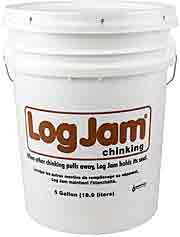
Log cabins were originally built with local materials using just a few hand tools. Today power tools and modern products can help you create a nice, long lasting result.
Davy Crockett’s cabin was cozy…except that it wasn’t. He spent a good amount of time plastering mortar into those joints every year. Old mortar cracks and crumbles out of the joints, allowing in wind, bugs, dust, rain and pollen. That’s why Sashco created Log Jam, the industry standard for synthetic chinking. Its texture recreates that old-time mortar look while sealing your rustic cabin from vermin and wind alike. It stretches and won’t let go when your logs move. With Log Jam, you can keep the cozy feel and rustic look without compromise.
Log Cabins Building Particulars
Log cabins were built with the minimum of fasteners. Corner notches are a unique building characteristic.
Notches are made in the logs where walls intersect. Doing a great job on these interlocking corner notches is critical to the integrity of the log walls.
Shown in the image is the dovetail corner notch. See the other styles at The Log Connection website.
Pickup a copy of Log Cabin Secrets: Book 3: Dovetails. Insider tips, tricks and secrets. Book 3 shows you how to build a log cabin with dovetail notches.This is the only book that teaches handcrafted, full-scribe dovetail construction. There are other books about chinked log cabins, but Log Cabin Secrets shows, for the first time anywhere, how to build full-scribe-fit dovetail cabins. You can get dovetails so beautiful and so strong that they look like your walls have been zipped together.
A Facebook friend says:
“As with all single-material wall systems, logs are a challenge. Fitting together, sealing joints, water/moisture infiltration (no vapor barrier) and no place for insulation or utilities are the common issues. Logs add pest infiltration, splitting, and warping to the mix. Classic “look” but real problems.They worked in history because they were cost-free, and the interior spaces they created were not airtight or “conditioned”. Modern needs for conditioning create sealed spaces with the accompanying movement of airborne moisture to or from that space. Not so good with log systems.”
Another Facebook friend says, “Logs look cool, but are a total pain in the ass, and I say this as someone who has built several homes.”
OK then. I’m just giving you all the information you need to make the best decision for your tiny house.
Log Cabin Kits are a Great Place to Start
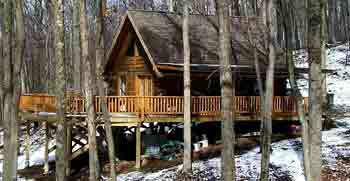
This 720 sq./ft. 2-bedroom, 1-bathroom log cabin kit was available thru eBay for $21,323.00*. As with anything on the Internet, you need to read the ad closely. The kit is the wood for just the shell. If you want the blueprints it’s $1,500.00* more.
The log cabin kit didn’t include conventional items as a foundation, sub-floor, 1st floor flooring, plumbing, electric, doors, windows, shingles/metal roofing, 2x’s, osb, & house-wrap for framing dormers & gable ends, or pressure-treated decking to dry it in along with the railing & stairs. The seller is very clear about the details of the cabin kit. They have many listed on eBay and have been doing this for many years.
In any case, it’s still a good way to get all the lumber at a package price. There are many log cabin kits available on eBay. Completing the sale thru the eBay website gives you the Buyers Protection Plan.
Another good source for cabin kits is The Home Depot. See more about home kits on this page of the Tiny Life Consulting website: Prefab Tiny Home from Home Depot.
Log Cabin Building Tools
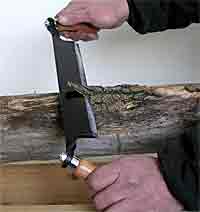
Timber Tuff’s 8″ Straight Draw Shave Tool is the perfect tool for debarking logs, firewood, fence posts, and more.
YouTube is Always a Great Source of Information
Here is an extensive YouTube® video from Nik Rijavec who built a log cabin by himself. His one-man techniques are quite impressive.
Note: Living in the Trees and Fire Danger
Living in the forest is an idyllic setting, especially for a log cabin. But it also increases the danger from forest fires. Because of that, your insurance will be a lot more than if you build in the open.
Fire danger mitigation such as clearing underbrush, trimming dead tree limbs, mowing grass, and creating fire breaks will need to be done. Keeping a water source, pumping equipment, and hoses to extinguish fires quickly is also a good idea.
One Mans Wilderness: An Alaskan Odyssey
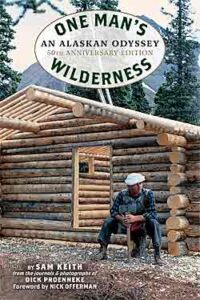
Here’s a book you will love to read. I have the 1st printing from 1968. It’s tattered and worn but still one of my favorite reads. The quintessential tiny home and tiny living story.
Celebrating the 50th anniversary of when Dick Proenneke first broke ground and made his mark in the Alaskan wilds in 1968, this bestselling memoir features an all-new foreword by Nick Offerman plus color photographs not seen in print for over 20 years.
To live in a pristine land unchanged by man…to roam a wilderness through which few other humans have passed…to choose an idyllic site, cut trees, and build a log cabin…to be a self-sufficient craftsman, making what is needed from materials available…to be not at odds with the world, but content with one’s own thoughts and company…
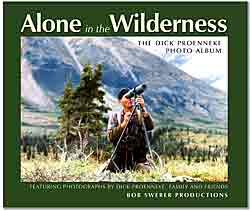
Thousands have had such dreams, but Dick Proenneke lived them. He found a place, built a cabin, and stayed to become part of the country. One Man’s Wilderness is a simple account of the day-to-day explorations and activities he carried out alone, and the constant chain of nature’s events that kept him company. From Dick’s journals, and with firsthand knowledge of his subject and the setting, Sam Keith has woven a tribute to a man who carved his masterpiece out of the beyond.
The Alone In The Wilderness Documentary on DVD is just awesome to watch. You’ll be inspired.
This video “Alone in the Wilderness” is a simple account of the day-to-day explorations and activities he carried out alone, and the constant chain of nature’s events that kept him company.
Click on image to order from Amazon.com
For more inspiring books on wilderness living visit this page of the Tiny Life Consulting website: The Best Off Grid and Wilderness Living Books
Other pages on this website you will like:
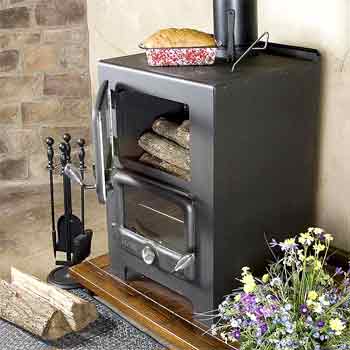
The Vermont Bun Baker combines the essential functions of a classic wood stove and cookstove in one compact, attractive package. Its extremely versatile design enables you to effectively heat a large area (up to 700 sq ft) and cook your family’s meals with one unique stove. Click on image to learn more.
Off Grid Living In A Tiny Home
Best Wood Stoves for a Tiny House
Adding Solar Power to Your Tiny House


